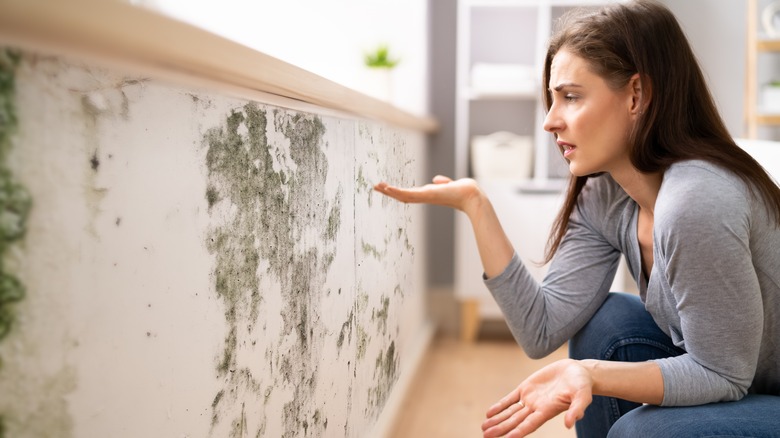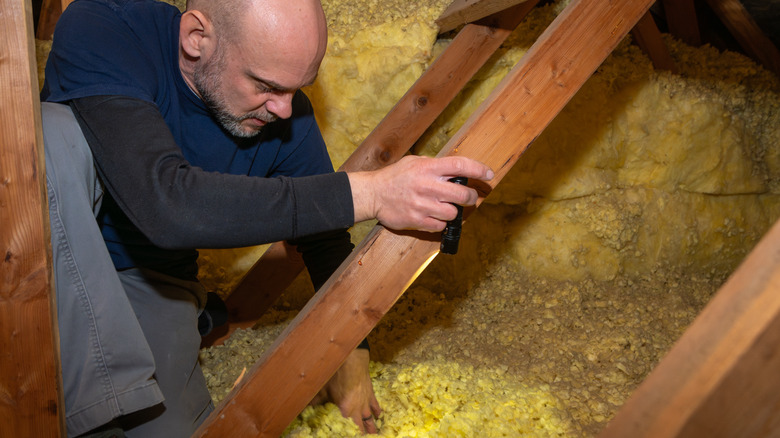The Hard-To-Reach Spot In Your Home You Need To Inspect For Mold Every Year
No matter how much housework you do, it can be difficult to make sure every single spot is clean — especially those unexpected places where mold may be lurking in your home. While everyday spills and stains are easy to tackle, mold growth is the one thing that is not only dangerous for the health of your home, but also much harder to get rid of. You may think you've checked your house for all signs of mold, but there's one sneaky spot you should inspect every year: your insulation.
Regular inspections are crucial because mold in insulation tends to develop slowly, often going unnoticed until the problem gets worse. Mold growth in insulation can occur for a variety of reasons, but it usually comes down to humid conditions that provide a perfect environment for it to thrive. These conditions may be a result of poor ventilation, interior leaks, or even poorly designed exhaust vents that redirect moisture into your attic rather than outdoors. But don't go breaking down your walls just yet — there are plenty of ways to inspect for insulation mold and take care of the problem properly.
How to check your insulation for mold
Mold growth is a tricky burden, so it's important to take the right approach for identifying mold and getting rid of it for good. Before checking for moldy insulation, consider non-visual signs like a musty odor or symptoms you may be experiencing. According to the U.S. Environmental Protection Agency, mold exposure poses a risk for potential health problems, such as allergies, irritation, breathing difficulties, and asthma. If you notice these symptoms, they may be a red flag for mold growth in your walls. To confirm any presence of mold in your insulation, you can hire a professional to do an inspection, or inspect insulation in your attic, basement, or crawl space to see if there are any indications.
When checking these spots, look for signs like wet insulation or humid conditions, which could indicate the growth of mold. If you have fiberglass insulation, you may notice mold appearing in a range of different colors through black, white, brown, or green patches. In areas like crawl spaces, black or green spots surrounding wooden structures can also be a telltale sign. If you notice any of these indications — whether it's musty odors or dark splotches — these could be signs it's time to hire a professional to get rid of your mold problem. To make sure your home stays safe and mold-free, make yearly inspections of your insulation part of your home maintenance routine, and address any issues promptly before they lead to bigger problems.

